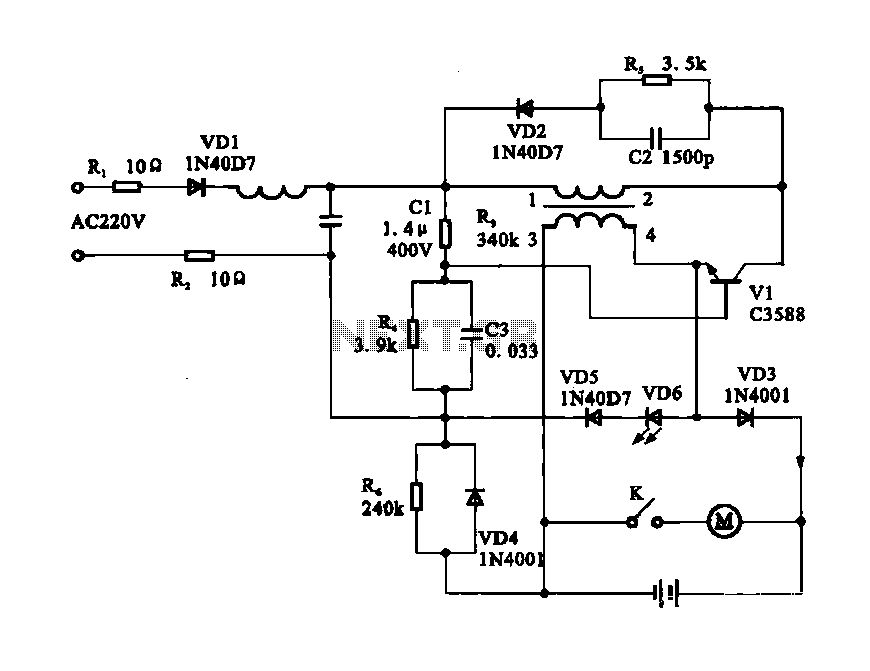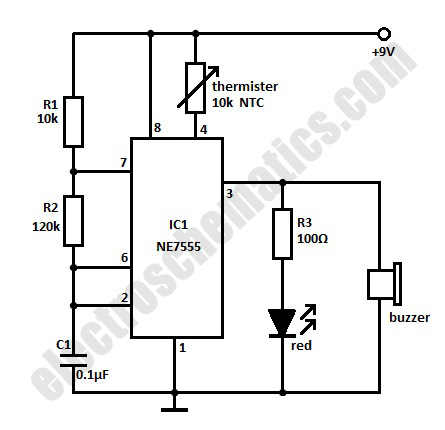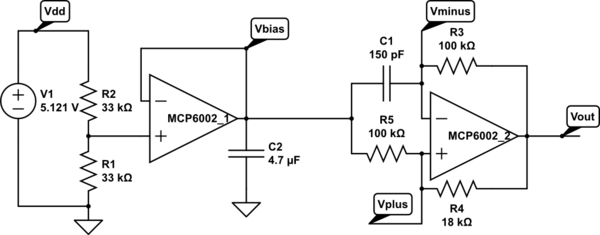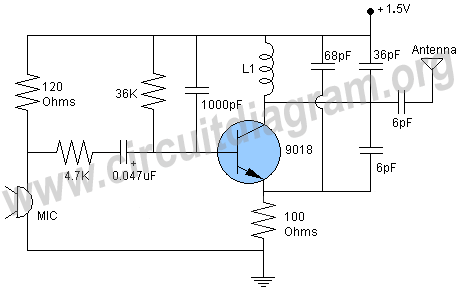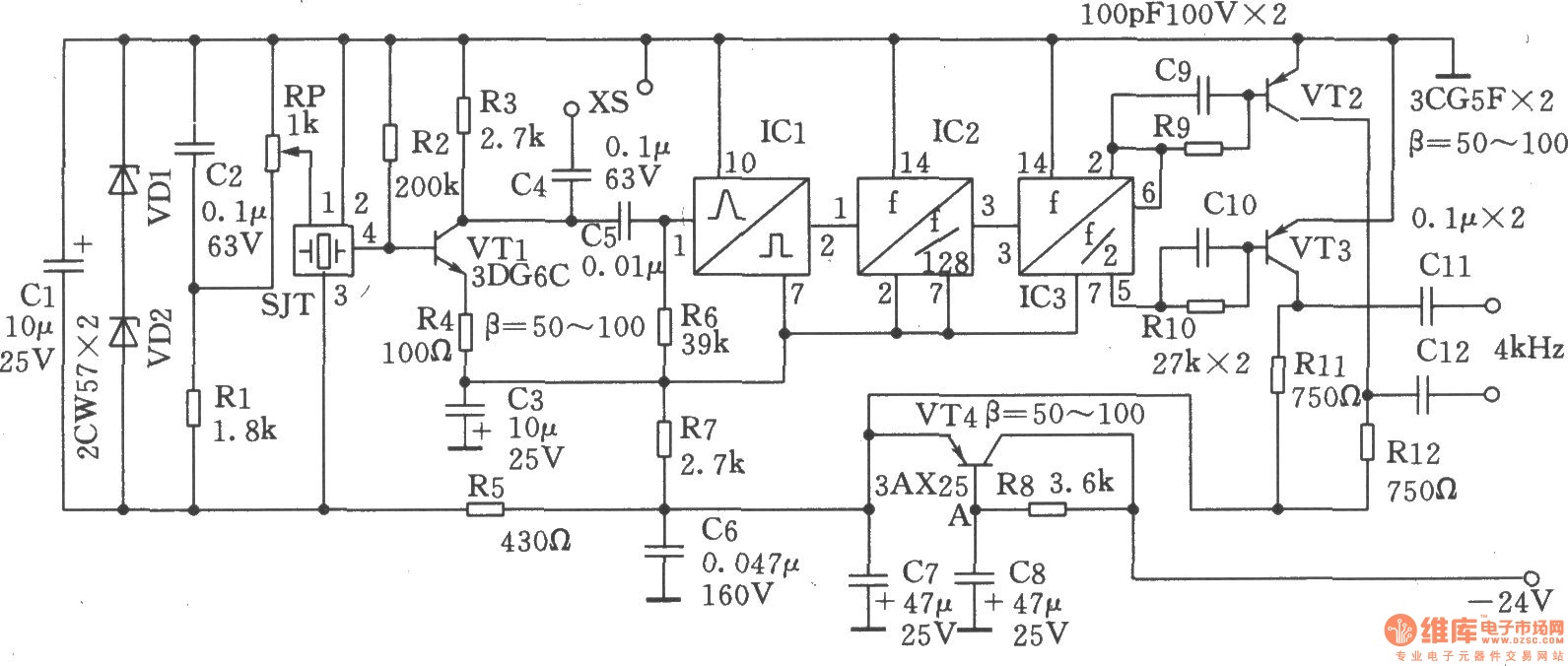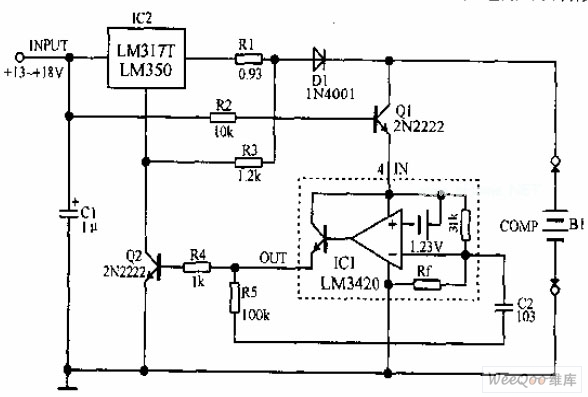
555 electronic musical instrument additional combo audio circuit
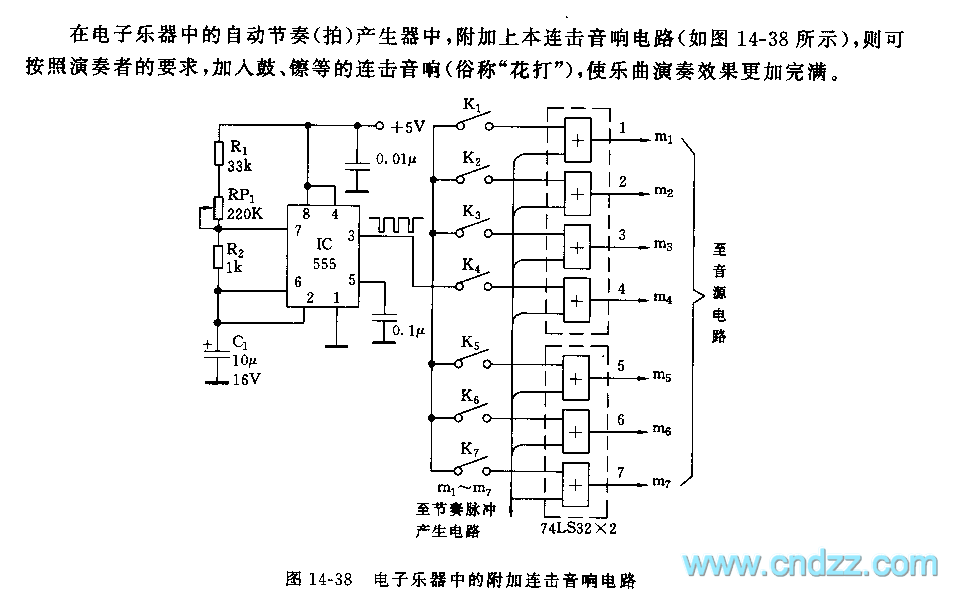
Adding this combination audio circuit, as illustrated in figure 14-38, to the automatic rhythm generator of electronic musical instruments fulfills the players' demand for incorporating drum and cymbal audio, enhancing the overall performance effect. The diagram indicates that the astable multivibrator is constructed using a 555 timer alongside components R1, RP1, R2, and C1.
The combination audio circuit integrates an astable multivibrator configuration utilizing the 555 timer IC, which is a widely used component in timing applications. The astable multivibrator operates continuously, generating a square wave output that can be used to trigger audio signals corresponding to drum and cymbal sounds.
In this setup, R1, RP1, and R2 are resistors that determine the frequency of the oscillation, while C1 is a capacitor that influences the timing characteristics of the output waveform. The values of these components can be adjusted to modify the tempo and rhythm of the generated sound, allowing for flexibility in performance.
The output from the 555 timer can be connected to a sound synthesis module or a digital audio processor that generates the desired drum and cymbal sounds. By adjusting the duty cycle of the square wave, the audio circuit can create varied sound dynamics, enhancing the expressiveness of the musical performance.
Additionally, the implementation of this audio circuit can involve further components such as operational amplifiers for signal conditioning, filters to refine the audio output, and possibly a mixer stage to balance the levels of the drum and cymbal sounds. This comprehensive approach ensures that the audio output is not only synchronized with the rhythm generator but also meets the quality expectations of contemporary electronic music performance.If we add this combo audio circuit (as the figure 14-38 shows) to the automatic rhythm generator of the electronic musical instruments, we can meet the the requirements of players to add the combo audio of drum and cymbals to make the performance effect more perfect. As the figure shows, the astable multivibrator is composed of the 555 and R1, RP1, R2, C1,.. 🔗 External reference
The combination audio circuit integrates an astable multivibrator configuration utilizing the 555 timer IC, which is a widely used component in timing applications. The astable multivibrator operates continuously, generating a square wave output that can be used to trigger audio signals corresponding to drum and cymbal sounds.
In this setup, R1, RP1, and R2 are resistors that determine the frequency of the oscillation, while C1 is a capacitor that influences the timing characteristics of the output waveform. The values of these components can be adjusted to modify the tempo and rhythm of the generated sound, allowing for flexibility in performance.
The output from the 555 timer can be connected to a sound synthesis module or a digital audio processor that generates the desired drum and cymbal sounds. By adjusting the duty cycle of the square wave, the audio circuit can create varied sound dynamics, enhancing the expressiveness of the musical performance.
Additionally, the implementation of this audio circuit can involve further components such as operational amplifiers for signal conditioning, filters to refine the audio output, and possibly a mixer stage to balance the levels of the drum and cymbal sounds. This comprehensive approach ensures that the audio output is not only synchronized with the rhythm generator but also meets the quality expectations of contemporary electronic music performance.If we add this combo audio circuit (as the figure 14-38 shows) to the automatic rhythm generator of the electronic musical instruments, we can meet the the requirements of players to add the combo audio of drum and cymbals to make the performance effect more perfect. As the figure shows, the astable multivibrator is composed of the 555 and R1, RP1, R2, C1,.. 🔗 External reference
